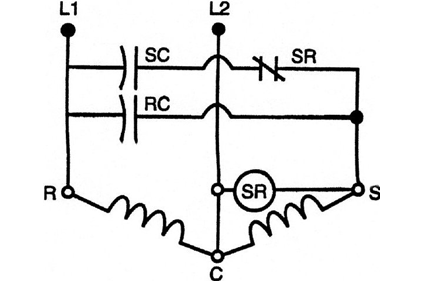Looking ahead to the upcoming cooling season, the equipment in this troubleshooting situation is a split system that’s approximately eight years old, consisting of a gas furnace that provides heat in the winter and a condensing unit and A coil to provide summer cooling.
There are actually three questions related to this problem — two of them are regarding overall troubleshooting procedures, and the third one is focused on the specifics of the equipment repair.
The information from the dispatcher is that the customer’s description of the problem is “blowing warm air.” This brings us to our first question about this problem. Which two components located in the furnace assembly can be eliminated from consideration as the possible source of the problem?
When you arrive, you confirm that the system is blowing warm air. You also confirm that the thermostat is set to the cooling mode with a set-point below room temperature, and you confirm that the fan switch is set to the AUTO position. A check on the condensing unit reveals that the condenser fan motor is operating normally, but the compressor is not running.
Your second question: Which two components inside the condensing unit can be eliminated from consideration as the source of the problem?

|
| Figure 1. |
After turning off the disconnect switch and removing the access cover, you find that the compressor is hot to the touch, indicating that it is attempting to start. Based on that observation, you disconnect the appropriate wiring when necessary, and, with a digital meter, you check the components shown in Figure 1, and you get the following results.
1. At terminals SC, you read the microfarad rating shown on the capacitor case.
2. At terminals RC, you read the microfarad rating shown on the capacitor case.
3. At the SR terminals of the potential relay coil, you read infinity.
4. At the SR terminals of the potential relay switch, you read a fraction of an ohm.
Your final troubleshooting question: What do you have to do in order to get this unit operating again?
Compare your answers with ours by clicking on the PDF link below.
Publication date: 3/10/2014
PDF - March Troubleshooting Answers
For information on Jim Johnson’s HVACR technician training DVDs, go to www.technicaltrainingassoc.com/HVACRVideoStart.htm.
Want more HVAC industry news and information? Join The NEWS on Facebook, Twitter, and LinkedIn today!



Report Abusive Comment